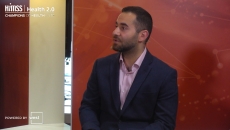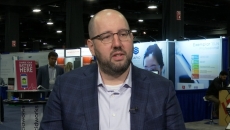Decision Support
Day Zero Diagnostics’ algorithm, ksim, promises to deliver a faster, more scalable, high-resolution approach for identifying hospital-acquired infection outbreaks, the company said.
Workforce Development
The vendor’s research team will work on the Houston-based provider organization’s campus with medical staff, scientists and engineers to develop non-surgical medical robotics systems.
However, blockchain technology is still in its infancy, so expectations should be managed accordingly, says Dr. Abdullah Albeyatti, CEO and co-founder at Medicalchain.
Workforce Development
A study in Health Affairs finds that strategies for managing how in-basket messages are generated and presented could improve the job satisfaction of frontline clinical staff.
Buzzwords like Artificial Intelligence (AI) and machine learning are commonly heard at conferences and industry events and they often conjure up images of robots or killing machines from the Terminator.
CGH Medical Center pharmacists say the system’s Med Card gives patients a better way to keep track of their medications – and say using the software has helped increase clinical knowledge.
Google Product Manager Jonathan Sheffi on how Google Cloud makes it easier to ingest and process genomic data at scale to run analytics that provide intriguing insight.
At the HIMSS Machine Learning & AI event, Dr. Anthony Chang, chief intelligence and innovation officer at CHOC Children's, cleared up some common misconceptions.
It will be the first and most comprehensive data hub in multiple myeloma designed to speed the delivery of precision-based treatment to every patient.
Many illnesses are easy to treat if caught in time. New EHR studies show how optimizing data can spot problems clinicians might overlook.

